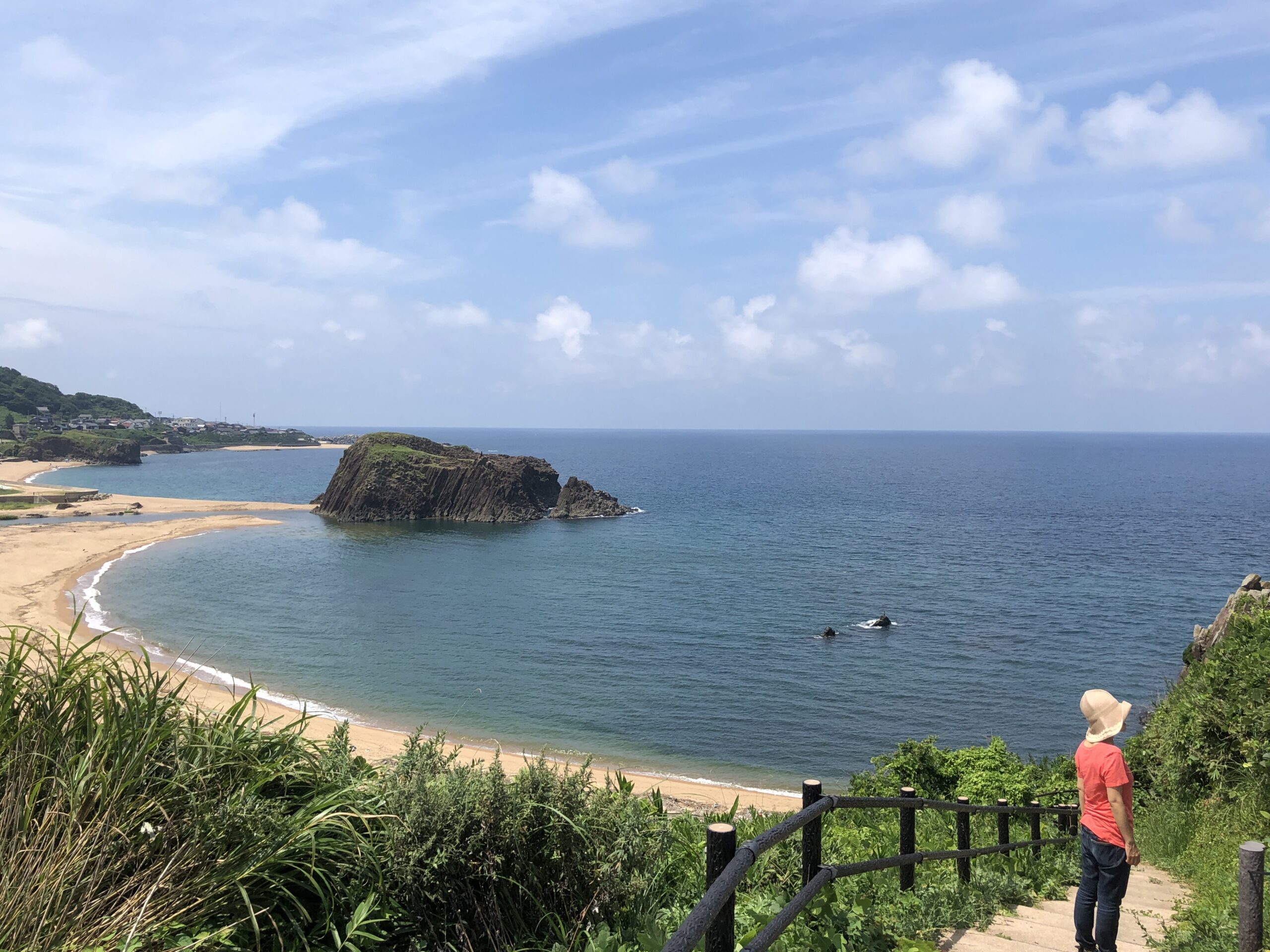
2024.8.26
Cultivating Tomorrow #1
Kayo Tokuda
Beyond One’s Lifetime
TOMORROW FIELD celebrate their fourth year in 2024: a series of arts and community projects have been developed in and around Taiza, located in Northern Kyoto, involving creatives in the field of crafts and culinary culture.
Kayo Tokuda is the founder of the Non-Profit Organization TOMORROW, which has been the driving force behind the movement. I wanted to explore deeper into her thoughts that underpin the series of projects, having witnessed it organically grow and expand since its inception.
The interview took place in SEI KYOTO, a traditional Kyoto-style townhouse renovated into an office/residence. Shunya Hashizume from TOMORROW and woodworker/artist Shuji Nakagawa, joined in occasionally to facilitate the conversation, while Tokuda took me through her journey leading up to the path she’s on, and the future she saw it leading to.
After playing a central role in a chain of projects to make the Seto Inland Sea one of the pilgrimage sites for contemporary art in Japan, including the Chichu Art Museum (opened in 2004) and the Teshima Art Museum (opened in 2010), you moved to Kyoto and began working with craftspeople and artists to create artworks. To a casual observer, that was a radical shift.
Many asked me this question, “So you’re quitting Art?” to which I was puzzled. I have always pursued my interest and my interest has been and is in the arts, so.
I used to think that I would die around the age of 36, after having accomplished something by then. But at 37 I realized, “What? I’m still alive?” I had to think about the next step (laughs).
Up until then, I was working with the mindset that there would always be next; the next project, the new encounters… But it came to me that there were not that many opportunities to build museums in one’s life.
I still wanted to explore the role of art in building a world without conflict. However, I also saw that the conventional model of managing museums was facing financial challenges. “How, then, would I approach creating a new, future-oriented museum as my own project? “ was my next thought.
One last thing is that… I have the feeling there is no next life for me. I have lived till now and I don’t think I’ll make another comeback. So, rather than thinking about what to do with myself, I began to think about the next generation and creating a new world from which I would eventually disappear.
This is your quest to create museums for future generations, shall I say?
Art nourishes our senses. A museum should be a place of education that encourages individuals to think for themselves through sensory, moving experiences. Everything that visitors see, touch, and eat, down to goods sold in shops… all have to be the experience that holistically speaks to their senses. And it has to be something they can sense because they are in that space, not anywhere else.
Yet, museums are faced with financial challenges and what I envisioned seemed almost unrealistic. “How can Art continue to circulate within society and nourish the ecosystem?” To answer my own question, I felt the need to stand on the edge of a cliff myself, to walk the talk.
I renovated a traditional townhouse in Kyoto and moved here. This is my way of facing the question, I’m hoping to find an answer by continuing to live here.

SEI KYOTO
Basing yourself at SEI KYOTO, you embarked on an exploration of Kyoto’s crafts. Why Kyoto?
I began to notice in my 30’s that many craftspeople from various fields were involved in creating a single contemporary art piece. I became aware of the contribution of each craftsperson and felt the urge to keep traces of these works for everyone to remember. For me to do so, I needed to have a better understanding of Japanese crafts and culture.
“If it’s not good, it won’t resonate” is my conviction. Only exceptional handwork could remain for centuries in this country. I chose Kyoto because this is the capital of culture, from my naïve, almost like the first-time-Japan-visitor kind of perspective (laugh).
In Kyoto, you started working with craftspeople and artists to create artwork.
Now that I think, it all started when I was part of the Chichu Art Museum construction project.
One time, we had to put up the Monet’s “Water Lilies” on a 10m-wide wall. The piece is 2m×6m and I was looking at it from 20 meters away. I could see it was tilting 2mm lower to one side, which bothered me. But I was only 30 or 31 at the time and most of the people working in the team were older. I still wanted to share that bothersome feeling as smoothly as possible.
I knew we couldn’t make a good museum unless we collectively shared the same goal. Having one amazing art piece wasn’t enough: the lead-up to the piece, and everything else that surrounded the piece all had to come together seamlessly to deliver the experience resonating with the visitors.
To become one as a team, I started with something as small as wearing the same helmet on the site, joining the daily morning stretch exercises, and the lunch table: it got to the point that I memorized everyone’s family members and their hobbies.
Even on our days off, we would go see some exhibitions together; gathering at the station in the morning to get on the bus, spending the whole day at the site, lunching together, and sharing opinions. Everyone had a different point of view and I learnt from each of them. And when I shared my view, they’d listen. From that point on, Art stopped being a stranger to them. They started relating to it and thinking “It’s my lighting, my equipment, and my skills that make the art piece called a museum.”
This change in perspective is everything. When we all share that mindset, then we can work toward one goal. It took me about one and a half years to build that relationship with everyone in the team.
Another time, it was ceiling light. They were ring-shaped lighting to be attached to the ceiling. Each one had a joinery point where an end met the other to make a circle. And it bothered me when all the lines were not facing the same direction, though nobody makes a fuss over such meticulous details in reality. Luckily for me, we had already built the relationship by then: the electrician said, “I’ll fix it right away,” the moment I entered the space and looked to the ceiling without saying a word.
The Teshima Art Museum was mostly built by the same team. I think it would have been impossible without them. Take an example of wall finish, etc … The Teshima Art Museum is here because the Chichu Art Museum preceded it.
Reflecting back, I was spoiled then. I was blessed with the experience of creating amazing work with exceptional specialists.
I absorbed that experience and came straight to Kyoto.
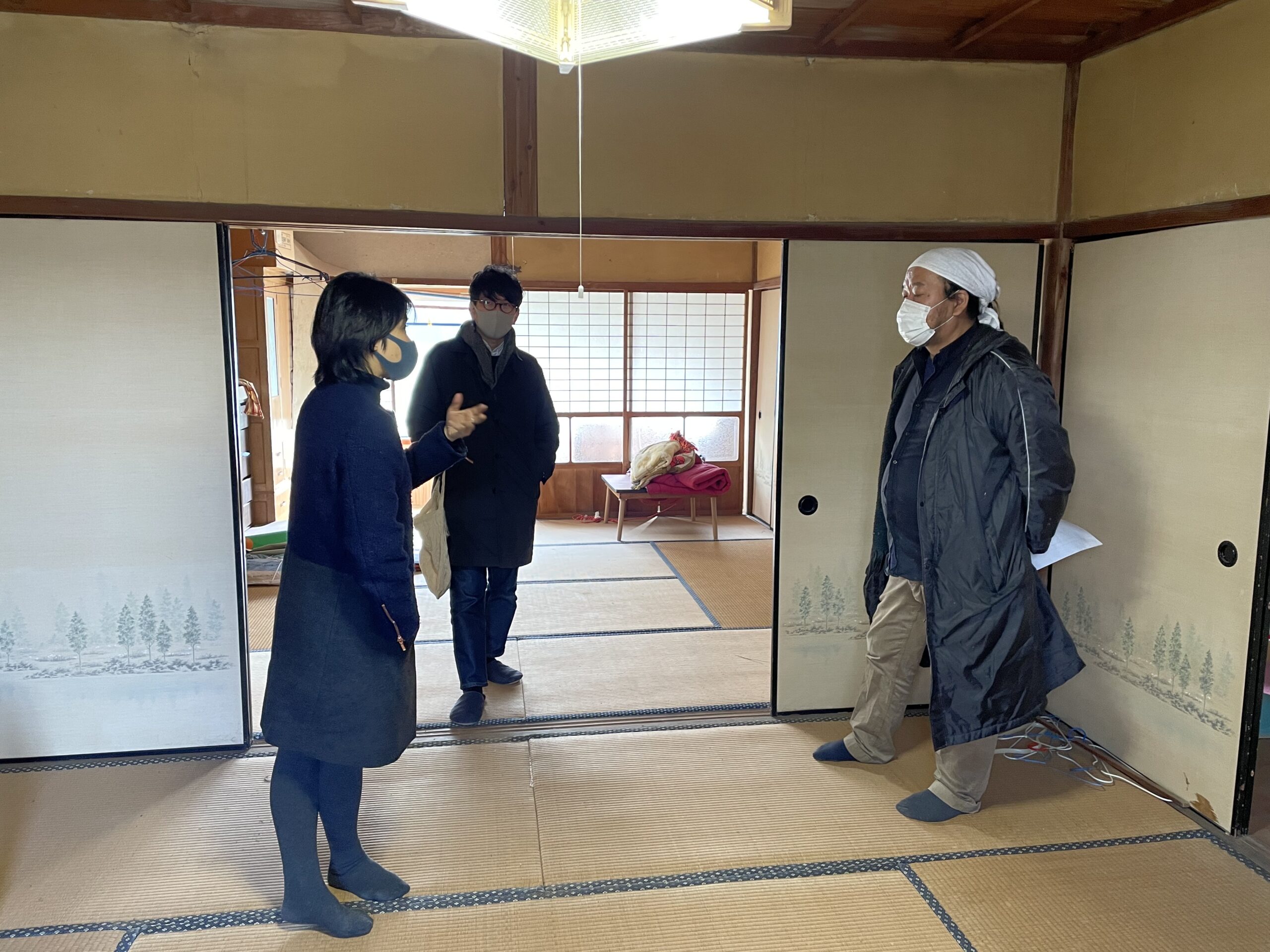
At TAIZA Studio before the renovation, with Koh Kado from Kamisoe and Shuji Nakagawa in 2021.
How did you recreate the 1.5-year process of coming together as a team at the Chichu Art Museum, in the field of crafts?
(Nakagawa) She occasionally sends me a photo with no explanation. And I have to wonder what I am supposed to get with it (laugh).
Well, if I looked at someone’s work and said this or that, then the creator might take it personally. I don’t want to be picking on insignificant small details when I am not an expert myself, either. It’d be boring and not the way I’d like to share my world.
Instead, I’d rather share my vision; “This is where I want to go next.” “This is the beauty I want to see.” “I want to create this world together, and what can I do to achieve that with you?” I find inspiration in nature, theatre play or literature, and I want to share it in its entirety. I guess that’s why I send you photos.
My approaches have always been the same. By sharing meals, tea, books and experiences. Then we can start sharing perspectives, or a way of seeing things, and become able to share the same vision and goal. I like creating things together, after all.
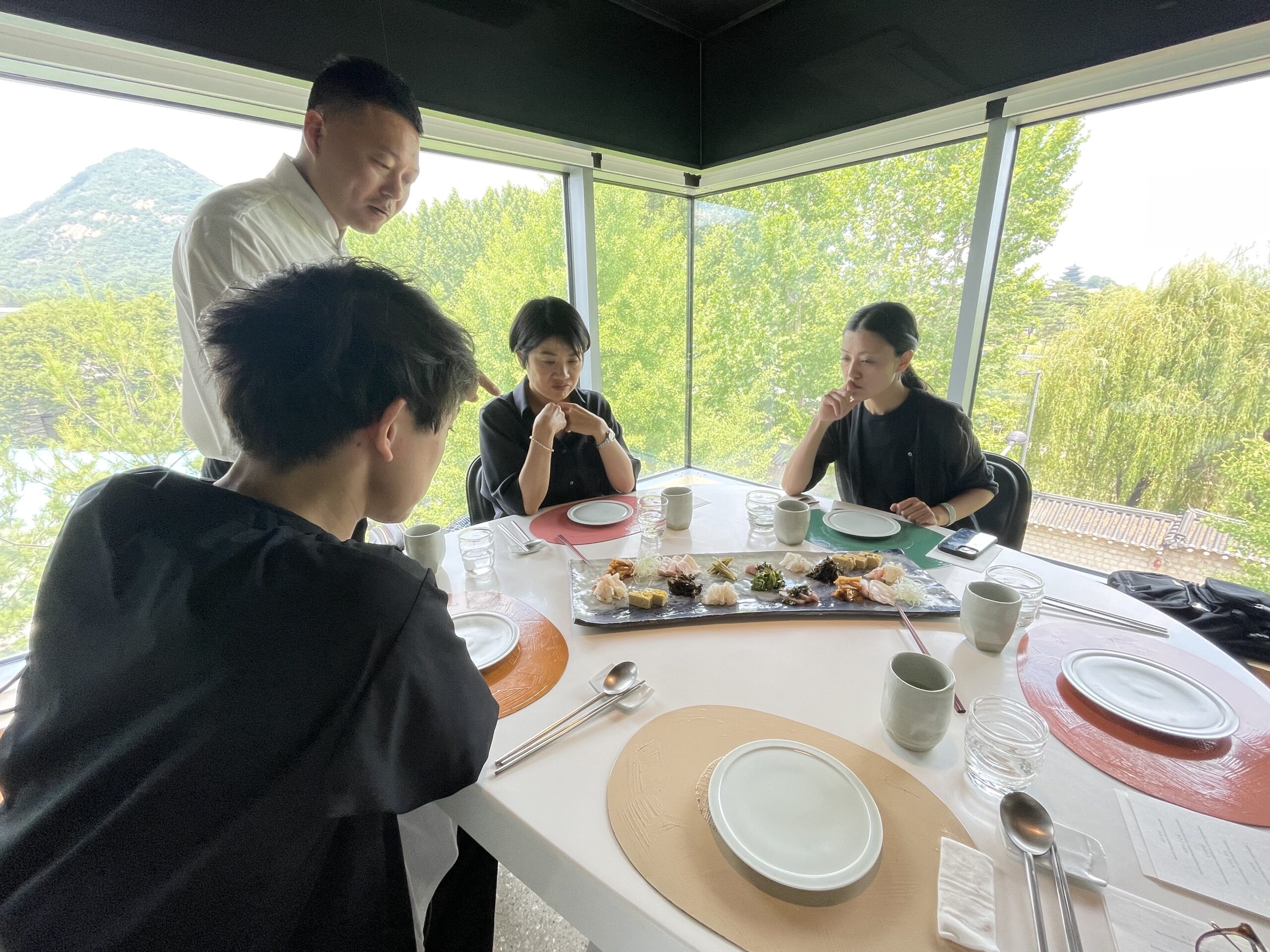
Field trip to Seoul with ceramicist Akio Niisato and Japanese confectioner Sayoko Sugiyama from Okashimaru in 2024.
Has anything changed from the time you were at the Chichu Art Museum?
Back then, I was bothered about the 2mm difference: Now the difference can be 20cm at TOMORROW FIELD (laughs). But I don’t mention it. I try not to address it. Why?Because… they’re the next generation, aren’t they? If everything goes accordingly, I’ll die before them. They’re the ones creating the next world, and I shouldn’t be telling them what is right.
Your ideal has shifted, seems like. Back then, it was the world you wanted to achieve down to the 2mm precision, and now you close your eyes to the 20cm difference, but it is not a compromise at all. Rather, it is the new world, way of being, that you’re looking at.
My World has become Our World.
I think art is a reflection of society and the world, and I often wonder what my worldview as a woman can bring to the art world. Today, the word shokunin is usually associated with men, whereas knitting or sewing has more association with women. When I was in Naoshima, I rarely saw women in the field. I was often treated like a mere messenger when I had to speak up and express my opinion. I had to make a tremendous effort to be heard. It’s often men who sit at the top or managerial positions of organizations. Even today, I get asked, “Who is my boss at this NPO?”
If you trace the history of Japan, we used to have female rulers or empresses: men and women had an equal partnership and mutual respect, though there may have been a division of labor in a way that men would focus on politics whereas women took on more shamanistic roles. It makes me wonder why we have come this way.
I don’t have children, and it’s possible that I have a sense of guilt for that and trying to make up for it by working extra hard. But maybe there is something only I can do in arts because I am a woman. The answer to that, I feel, is also in my work, the femininity I bring into the role of art.
It can come down to a simple question like “Why does a building have to be this big?” When a large shrine can’t be repaired due to a lack of financial support, I would suggest constructing a smaller version. But many oppose my proposal saying, “It has to be this big (as it had always been).” I wonder if it’s a pride? It seems a bit masculine approach to me. If we could set our egos aside and connect more with nature, we would be able to live much more harmoniously with fulfilled hearts in this island country.
(Nakagawa) To me, three stones piled on top of each other are enough to evoke awe: it makes me want to put my hands together to pray.
I certainly feel these (three stones) are just enough. Shrines used to be constructed where water sprung. Somehow constructions on top became bigger and more authoritarian than necessary.
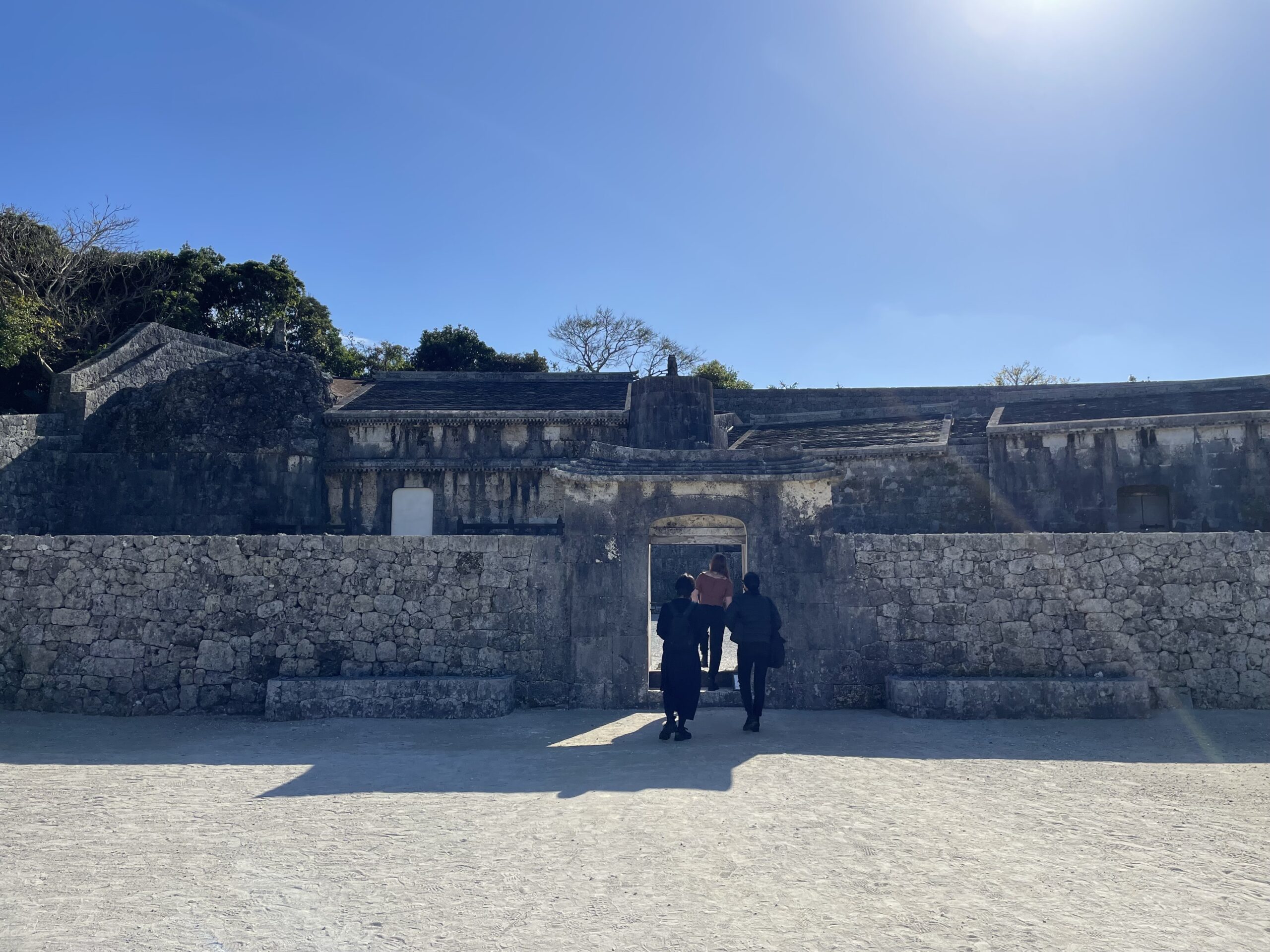
Field trip to Okinawa with Teresita Fernàndez and her daughter Cypress in 2023.
The world of TOMORROW FIELD is now unfolding in the community of Taiza.
I have long been interested in communities based in villages. Even in Naoshima, I wanted to create spaces such as a library or a community hall. These are places where local people, artists, poets, scientists, and other people from a variety of disciplines could come and interact with each other, to think about the world together. It’s not just about art: it is a community where Art and crafts are part of everyday life.
It’s open and holistic; we care about the environment and sustainability, so we cook certain ingredients and serve them in particular dishes in accordance with the vision. Because we want the visitors to experience the whole and bring some bits back home. That’s the way we communicate our vision.
In a sense, TOMORROW FIELD is an embodiment of our vision. The way we wish art can be in future. In this community of Taiza, located in northern Kyoto, there is no museums, no universities, and most people have never been exposed to art. When I decided to deliver art here, I told myself that “If I can’t surpass Shosoin, I shouldn’t create a museum.“ We’re constantly influencing our surroundings, and building something inevitably impacts the environment or ecosystem. We need to look beyond a century, see if our construction and its value will remain and be able to contribute to the beautiful world in future. My biggest aspiration is to create something of longstanding value.
I’m excited to see how TOMORROW FIELD will unfold further from now.
When I tried to explain what we were doing at TOMORROW FIELD in the first year, I realized that the words were helpless. But now finally, people started to see the shape of it, or we’re able to show it to the world.
Then again, words and pictures are not enough to communicate the full vision, we have to get them to come to Taiza.
(Hashizume) We found out later that Taiza is the farthest place from Tokyo. It takes 7~8 hours by public transportation. In a way, it’s farther away than Okinawa (laughs).
On a positive note, that’s precisely why anybody who’d come here would stay more than a day, and receive the full experience.
I heard you saying TOMORROW FIELD would not be complete in your lifetime. Do you still think so?
It won’t. I think it’s healthier that way.
That being said, a part of me wants to see its completion before dying (laughs).
Interviewer/Translator: Tomo Yoshizawa (Cultural Translator)
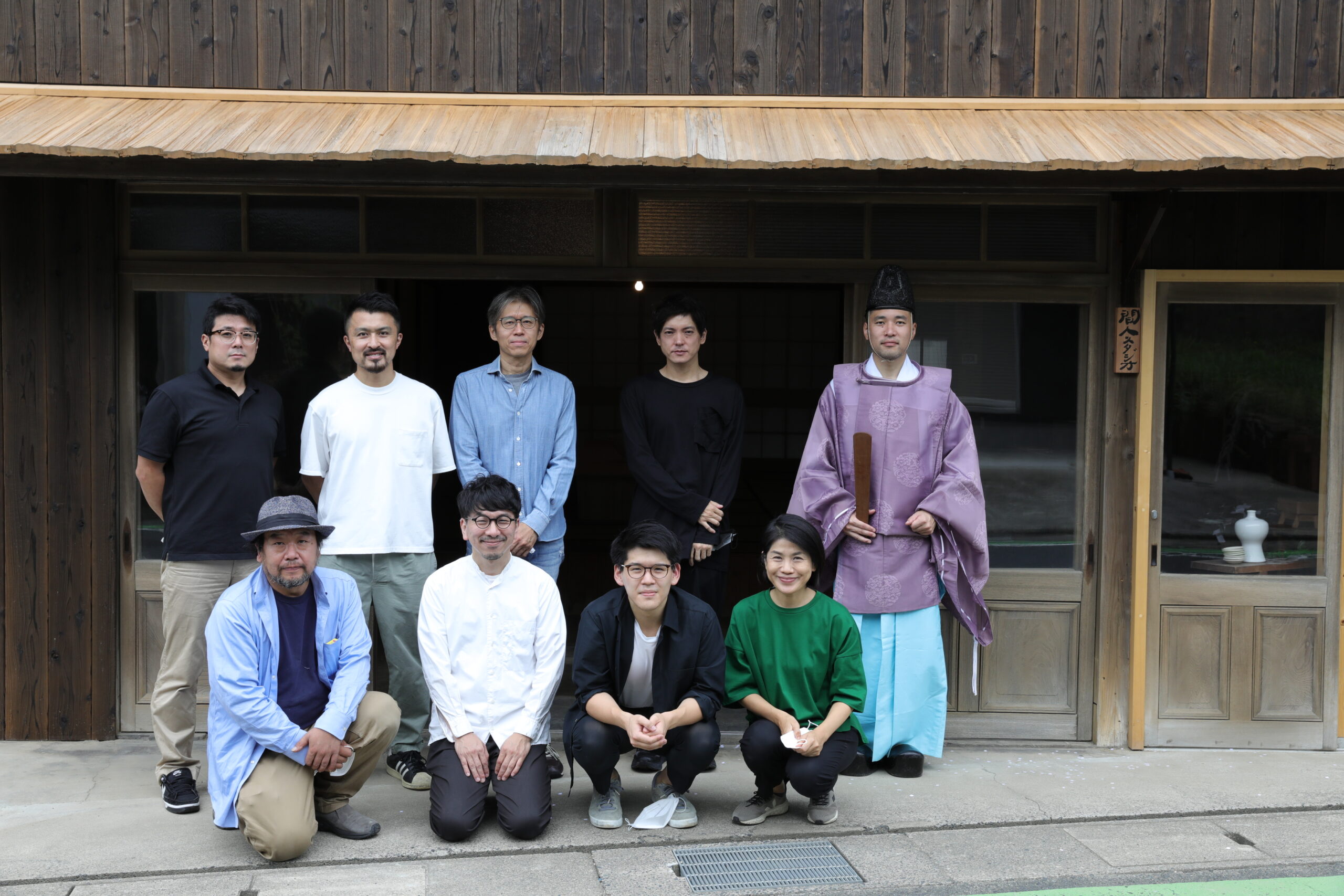
30th September 2021 at TAIZA Studio Inauguration Ceremony
